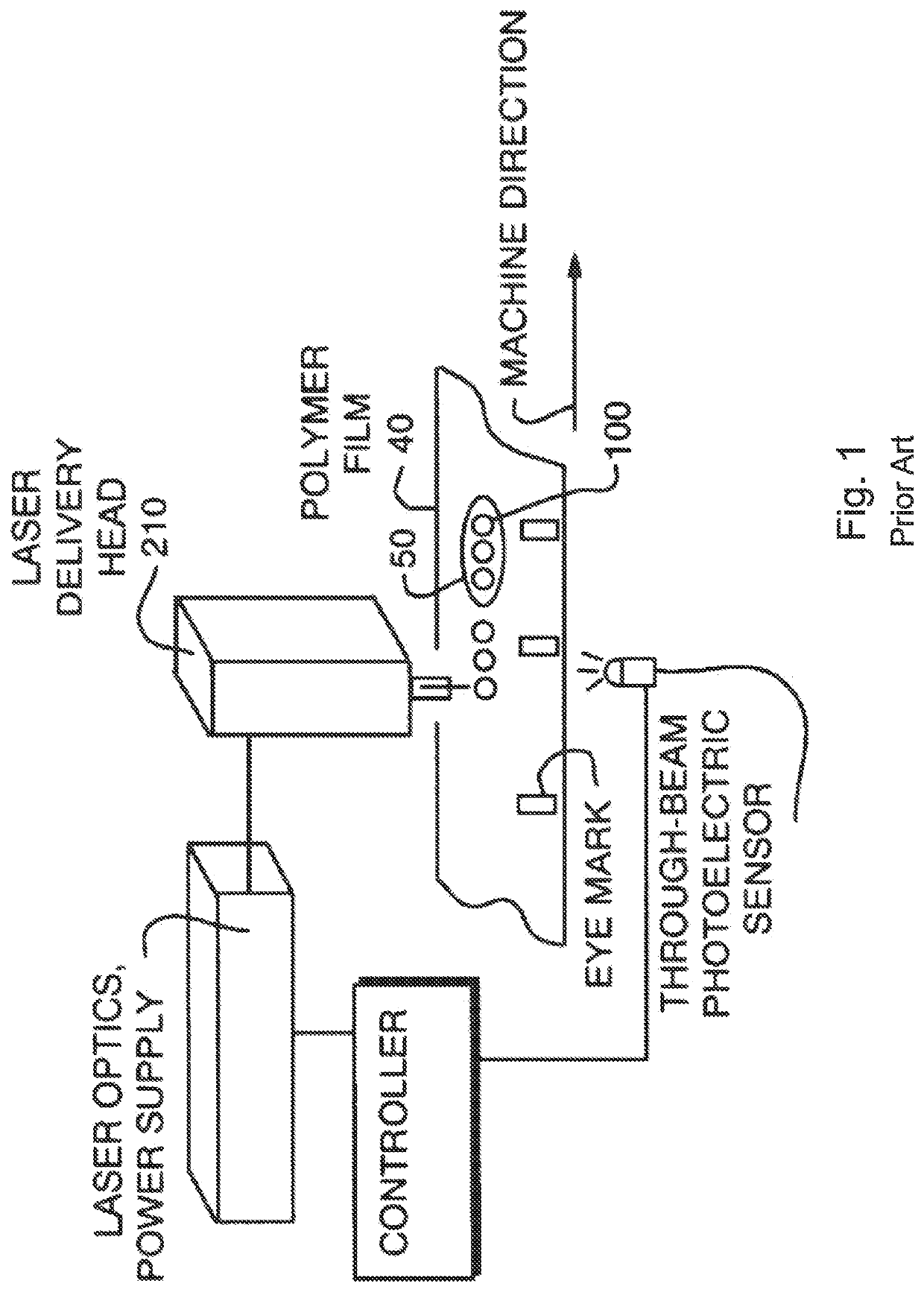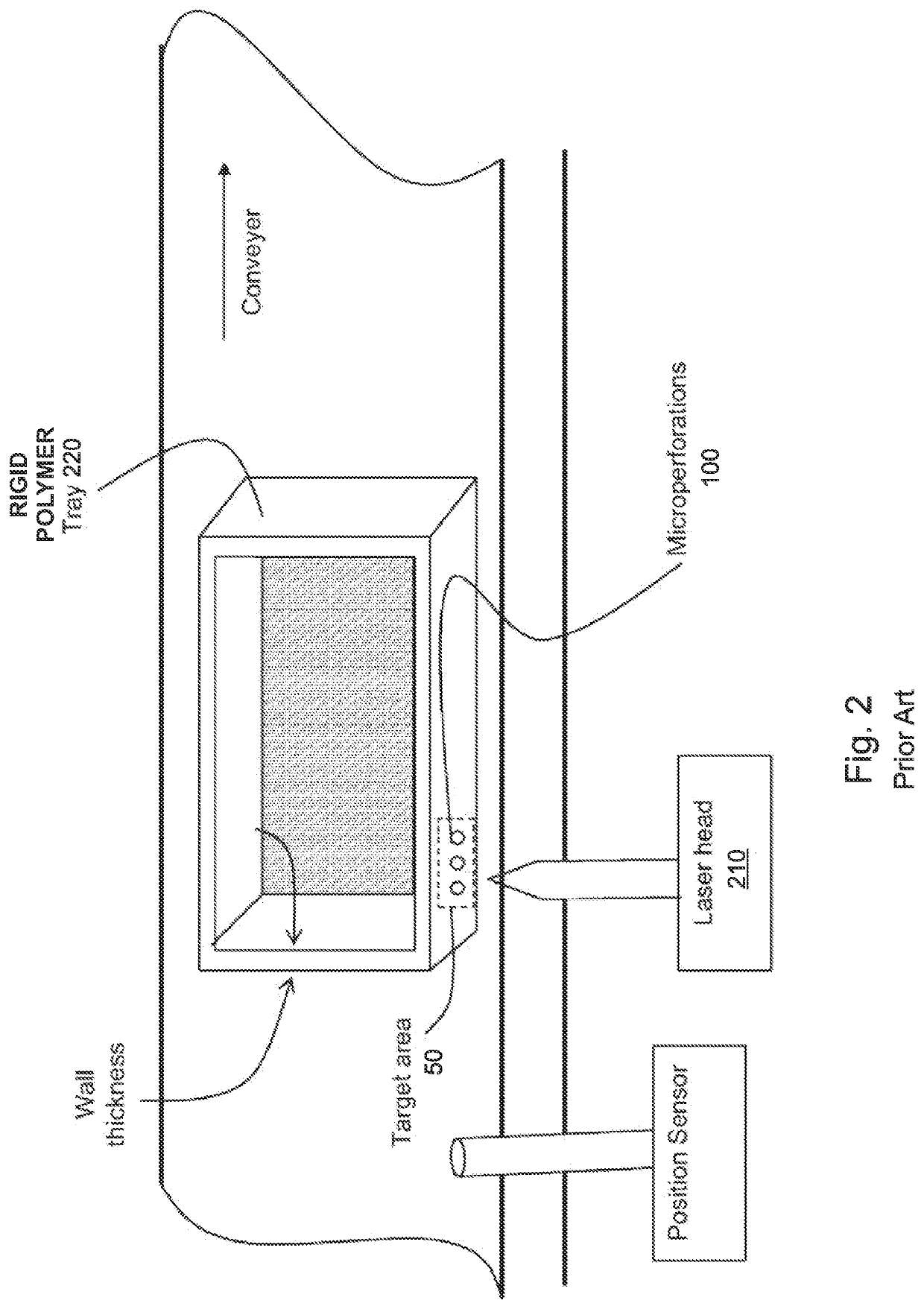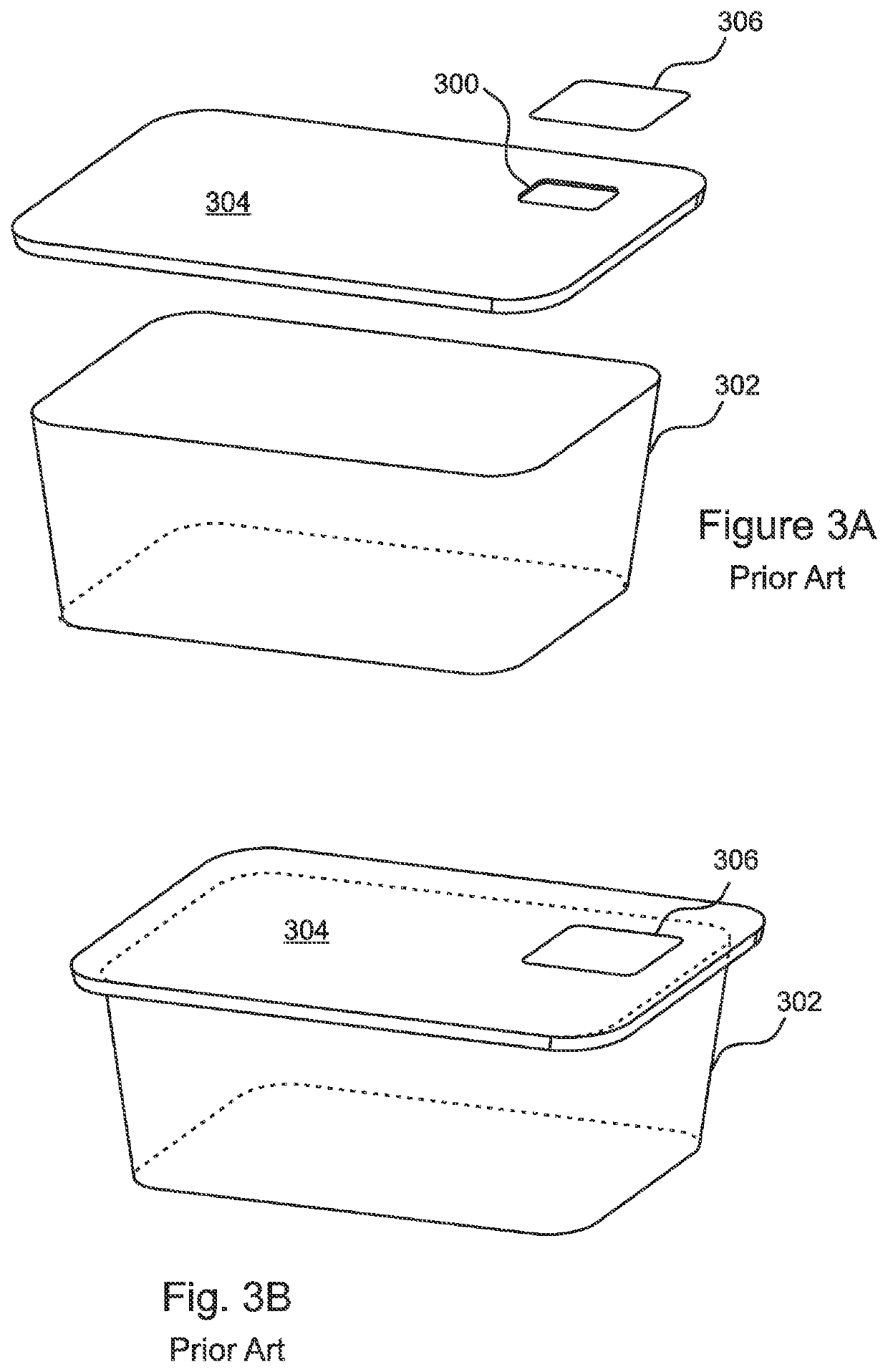Apparatus and method for producing microperforated patches and labels applicable to modified atmosphere packaging
a technology of micro-perforation and patches, applied in the field of fresh produce packaging, can solve the problems of reducing the metabolic rate of fresh produce, affecting the quality and shelf life of fresh produce, and affecting the quality of fresh produce, etc., and achieves the effect of reducing production costs and easy and precise adjustment of gas permeability
- Summary
- Abstract
- Description
- Claims
- Application Information
AI Technical Summary
Benefits of technology
Problems solved by technology
Method used
Image
Examples
Embodiment Construction
[0063]The present invention is a method for producing microperforated labels or patches with defined O2 flux rates for use in MAP packaging that reduces production costs and provides easy and precise control of the number and sizes of microperforations. The method is applicable for microperforating patches or labels arranged in a plurality of columns on a web. In embodiments, the method is applicable to patches provided on standard label stock intended for processing on conventional label presses, which are narrow web presses (web widths of 6″ to 18″).
[0064]With reference to FIG. 4, the label stock 400 used in embodiments of the invention is typically between six inches and fifteen inches wide, i.e. suitable for use with narrow-web printing presses as are typically used by label manufactures, and either includes pre-cut labels 402 arranged in rows and columns, or is intended for subsequent die-cutting into rows and columns according to the desired label sizes after the microperforat...
PUM
| Property | Measurement | Unit |
|---|---|---|
| output power | aaaaa | aaaaa |
| output power | aaaaa | aaaaa |
| speed | aaaaa | aaaaa |
Abstract
Description
Claims
Application Information
 Login to view more
Login to view more - R&D Engineer
- R&D Manager
- IP Professional
- Industry Leading Data Capabilities
- Powerful AI technology
- Patent DNA Extraction
Browse by: Latest US Patents, China's latest patents, Technical Efficacy Thesaurus, Application Domain, Technology Topic.
© 2024 PatSnap. All rights reserved.Legal|Privacy policy|Modern Slavery Act Transparency Statement|Sitemap



